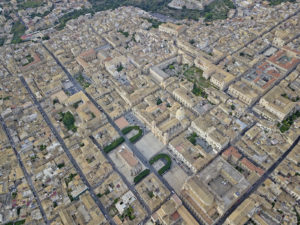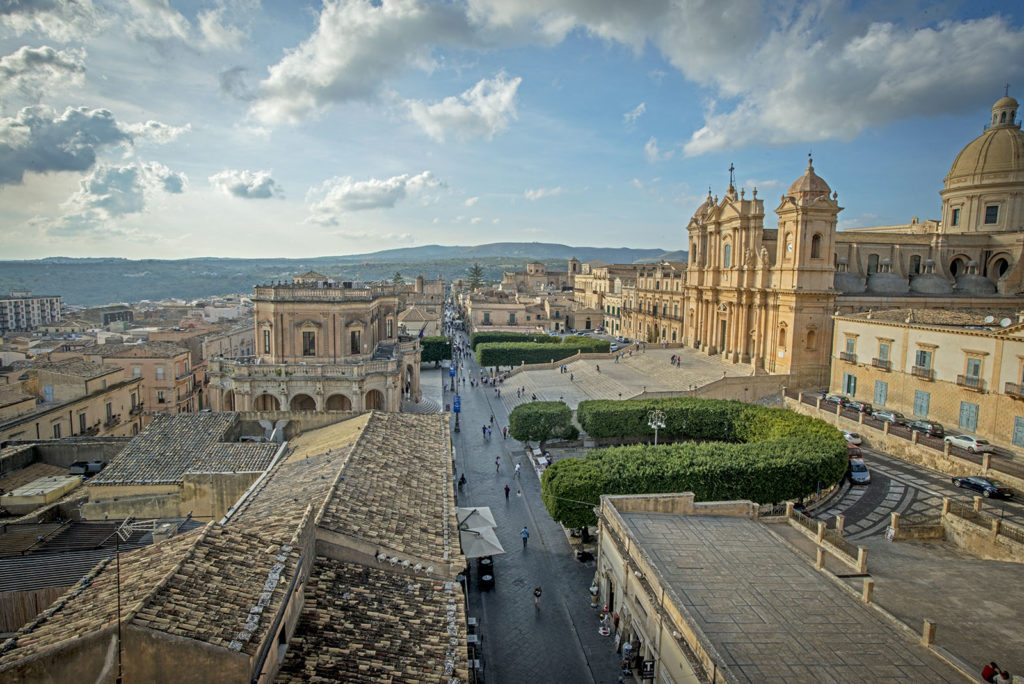The current city of Noto is the result of a complete reconstruction in a new location. The previous site, called
Noto antica
, was destroyed by the earthquake of 1693.
was destroyed by the earthquake of 1693. The community took more than ten years to decide where to build the new city. A decision was finally made by the vicar general Giuseppe Lanza
Duca di Camastra
who chose the Meti Plateau, a safer and more accessible area for trade routes.
The aristocracy and the clergy invested heavily in the reconstruction, and the works were commissioned to the best architects of the time:
Rosario Gagliardi
,
Vincenzo Sinatra
and the Labisi brothers, flanked by valuable craftspeople. The urban layout is arranged on two levels.
 The first includes the slope and the upper part on the hill called the Pianazzo, where the popular buildings were built. The second is monumental Noto, whose urban design is attributed to the Jesuit architect Angelo Italia. It is located on the lower part of the slope where the noble buildings and religious complexes initially settled with temporary structures.
The first includes the slope and the upper part on the hill called the Pianazzo, where the popular buildings were built. The second is monumental Noto, whose urban design is attributed to the Jesuit architect Angelo Italia. It is located on the lower part of the slope where the noble buildings and religious complexes initially settled with temporary structures.
Later, in the 18th century, this area became home to the city’s magnificent Baroque scenery. Monumental Noto extends along the east-west axis, where three squares and the main buildings are positioned, with a layout similar to Catania. The Pianazzo, on the other hand, has a chessboard layout and runs along the north-south axis.
Between changes of perspective and altitude, the intersection of the two roads, the architecture and the staircases make up the wonderful Baroque scenery of Noto.
